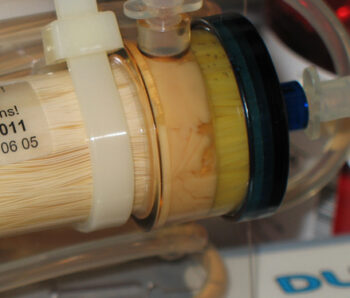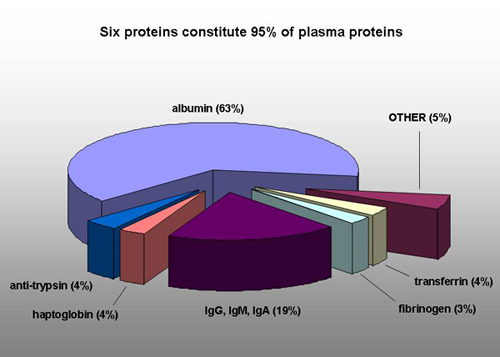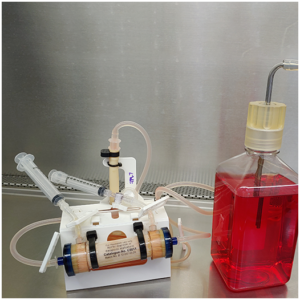

Microenvironment generated by cell’s autocrine factors
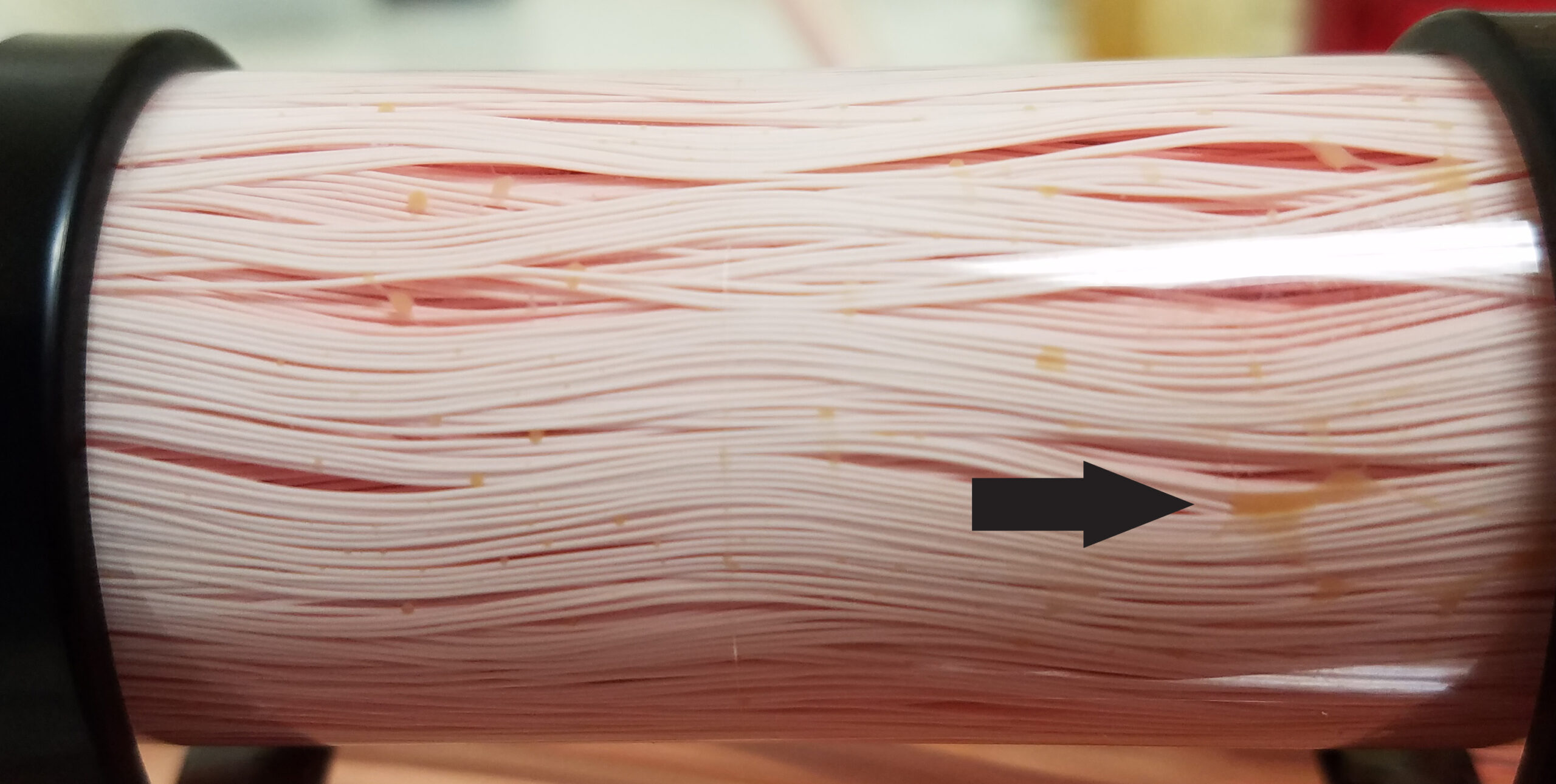
Cardiac spheroids growing in 3-dimensions in hollow fiber bioreactor.
Click here for our US list pricing for 2025. We offer tiered discounted pricing for quantity purchases of our products, 10-25 units, 25+ units, and 50+ units. Please enquire for details. We recommend the most appropriate products for your applications so please feel free to email or phone us to discuss your application and provide you with a quote at info@fibercellsystems.com, 301-471-1269, 240-440-2662. We can accept credit cards and purchase orders from accredited institutions.
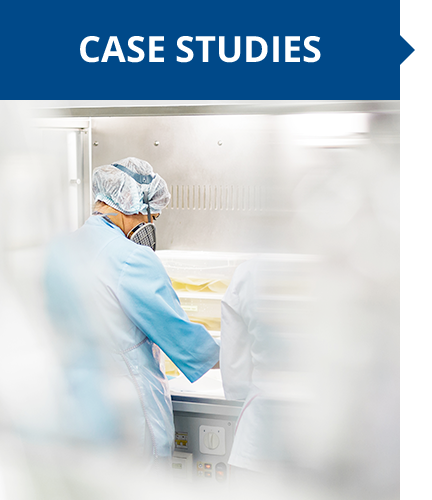
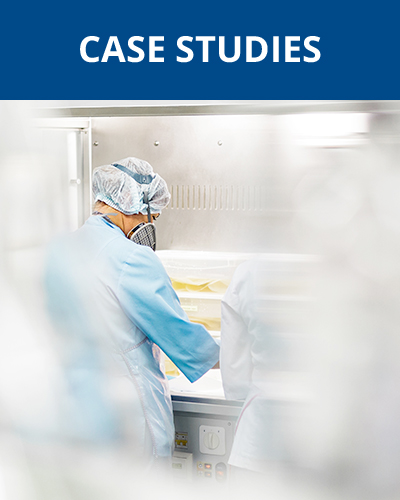
1. Generation of Mesenchymal Stromal Cell Precursors in a 3D Hollow Fiber Placenta Co-Culture Model
Data and observations indicate that a mixed cell population derived from a human placenta, when seeded into a hollow fiber bioreactor, remains viable for several months, spontaneously forms 3-dimensional nodular structures, and continuously generates suspension cells of non-defined phenotype that subsequently show MSC phenotype and proliferation when seeded into 2D cell culture flasks. Read paper here.
2. Co-Culture of Stromal and Erythroleukemia Cells in a Perfused Hollow Fiber Bioreactor System
Development of a hematopoietic co-culture system using the hollow fiber bioreactor (HFBR) as a potential in vitro bone marrow model for evaluating leukemia. Supporting stroma using HS-5 cells was established in HFBR system and the current bioprocess configuration yielded an average glucose consumption of 640 mg/day and an average protein concentration of 6.40 mg/mL in the extracapillary space over 28 days. Read paper here
3. Three‐dimensional cell‐based assays in hollow fibre bioreactors
Richard Knazek was searching for a way to culture adrenal tumour cells under in vivo‐like conditions to study hormone secretion in response to drug stimuli. Hollow fibre bioreactors offer a method by which cells can be cultured at tissue‐like densities over long periods of time. Hollow fibres act as ‘artificial capillaries’ and act much as capillaries do in the human body. Read paper here
4. Cryptosporidium culture
The FiberCell hollow fiber system has been used to construct a long-term human gut model with these features. Read paper here






